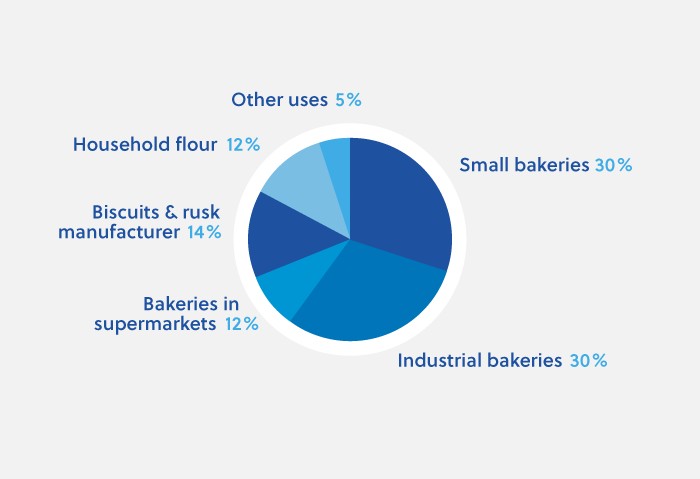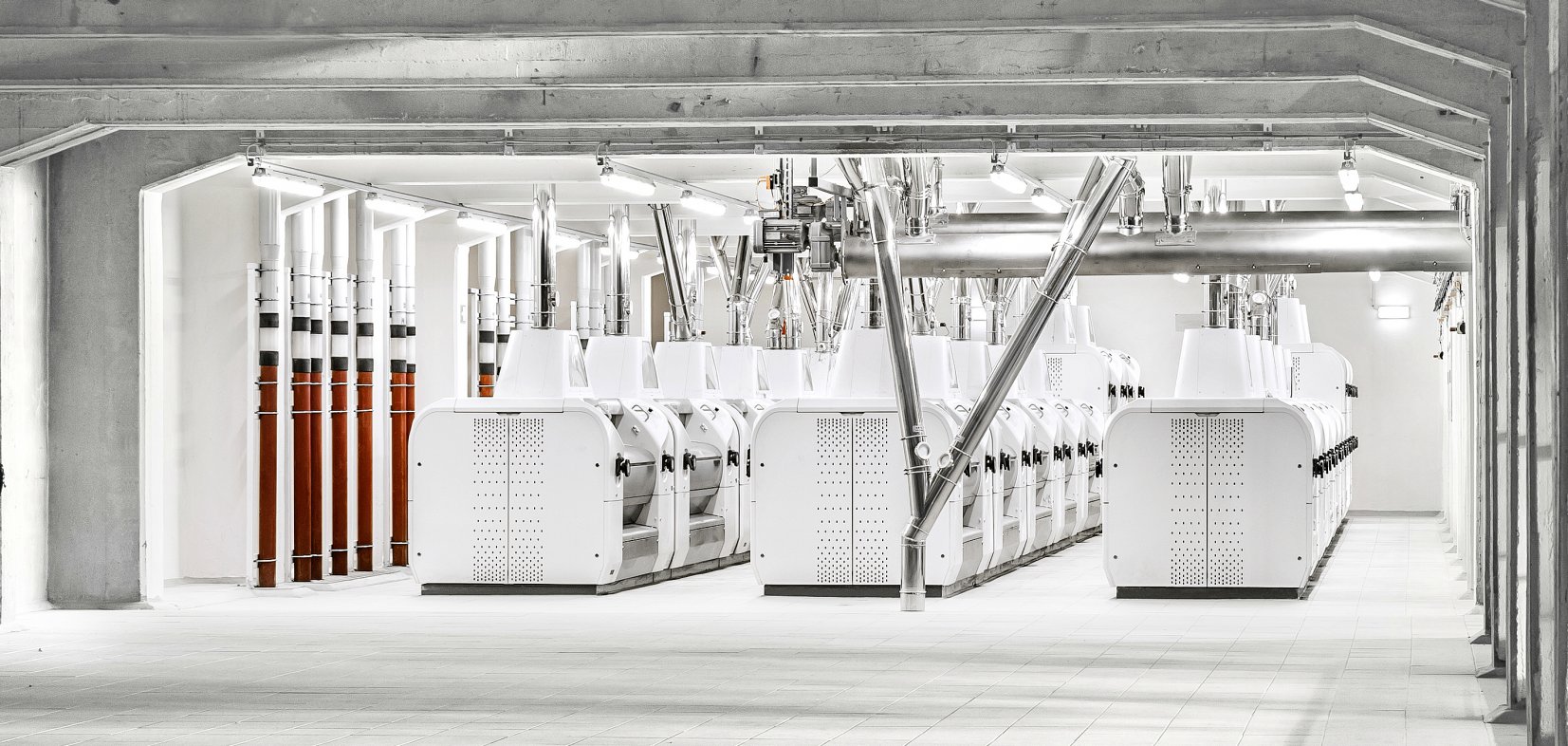Todays' European milling industry combines traditional skills with modern technology to produce high-quality cereal flours
Strengthening Europe's economy
The European flour milling industry employs over 45 000 people and 350 000 indirect labour at European farm level for a turnover of around 15 billion Euro. It is the leading food industry in grain processing, using around 47 million tonnes of common wheat, rye and oats a year to produce around 35 million tonnes of flour on an annual basis.
Supporting Europe's farmers
The sectors employs an estimated 350 000 indirect labour at European farm level due to its local sourcing of home-grown cereals and its central position in the food chain (Source: LEI-Wageningen UR study).
Supplying European consumers with local, safe and quality staple food
Where does wheat flour go after the mill?

In Europe, a sector of small and medium-sized enterprises
The European flour milling industry has always been producing on a relatively small scale compared to its counterparts, notably in the US. For ex., the average US flour mill produces 13 times as much wheat flour as the average flour mill in Europe.

